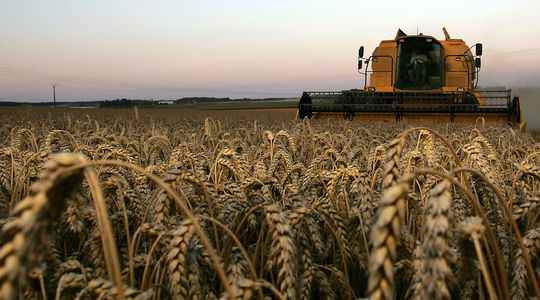Three episodes in less than three months, and an agriculture that is increasingly suffering. On Wednesday August 3, France was confronted with the hottest day of the third heat wave recorded since June and the heat still persists this Thursday August 4. Large cereal farms, arboriculture and market gardening… The recurrence of these phenomena affects all aspects of French agriculture and worries those first concerned. “We are seeing the impact of climate change more and more regularly, with recurring and sometimes cumulative phenomena,” laments Sébastien Windsor, president of the Chambers of Agriculture.
Because this year agriculture faces the double penalty of repeated heat waves, and an unprecedented drought that has settled throughout the territory. July 2022 is “the second driest month” in France since the start of measurements in 1958-1959 according to Météo-France, with a rainfall deficit of around 84% compared to normal. A record level of drought for soil moisture since July 17 and a black scenario for plants.
During a heat wave, the available water makes it possible to cope to ensure the “transpiration” of the plant, a natural phenomenon by which the plant evacuates more water than it draws from the soil and which allows the plant to survive. But when drought appears, the plant can no longer draw the resources necessary for its survival. , explains Serge Zaka, Doctor of Agroclimatology at ITK, a climate modeling company on agriculture. Usually these stages are calculated on the optimal cycles of the plant: “in a stable climate, our cropping calendar is set to avoid yield losses linked to these climatic hazards”, explains Serge Zaka. Sowing is thus carried out by anticipating any heat waves that could occur during the summer. But the recurrence of these heat phenomena makes these heat waves more likely at the critical stages of the plant. “A heat wave on wheat from mid-July will not impact yields as the plant has matured, but if it falls in June it can have much more serious effects on the ‘filling’ stage. ‘, a critical phase for yield”.
Drop in wheat production
The diversity of cultures and geography of France has sometimes allowed the agricultural sector to more or less absorb these phases of great heat. “We are in the process of completing the rapeseed harvest, and we can see that it has come out of these episodes of heat waves very well, because it is a crop whose phase of climatic sensitivity is above all the start of the cycle” , says David Gouache, deputy director of Terres Inovia, a technical institute for professionals in the vegetable oils and proteins sector.
But not all cultures emerged unscathed from these episodes. “There are disparities from one end of France to the other with episodes of heat waves which are more or less pronounced depending on the region”, describes Sébastien Windsor. According to the latest figures from Agreste, the statistics service of the Ministry of Agriculture, the declines in production are increasing: pure protein peas have lost around 34% of production, durum wheat has lost more than 20%. The yield of these plants also experiences drops of around 15%. In 2019, the June heat wave in France led to a 9% drop in corn yield and around 10% in wheat compared to the five-year average.
But more than the heat, it is the absence of water that affects crops the most. “The first heat wave damaged the wheat, especially in areas where there are few water reserves such as that which extends from Charentes to Lorraine, very small harvests”. The same goes for maize, which suffered the full force of the heat waves at the start of summer, when the cobs were flowering.
Salads that cook on the pedestal
Beyond major cereal crops, market gardening is also very affected by the combined phenomenon of heat and drought. Valentin Bonfils, a market gardener in Bourgneuf-en-Retz (Loire-Atlantique), saw his rows of lamb’s lettuce and young shoots burn on the stalk. During the first heat wave, he says he lost the equivalent of 2 hectares of lettuce. “On sensitive crops you cannot remove the burnt parts, and when the crop is like this it is not marketable and everything goes to the trash… There is no drop in yield, there is no simply has more production”, laments the market gardener.
In the Nantes region, which is facing an intense water shortage, the authorities have banned the watering of crops between 10 a.m. and 10 p.m., as well as on weekends. With direct consequences on current cultures but also those to come. “Since mid-July we have only sown 20 to 30% of what we had promised to our customers because we no longer have the water reserves necessary to irrigate them”, says Valentin Bonfils.
This is the other consequence of these heat waves which jeopardize or weaken the crops of the following year. “For the vine or arboriculture, these droughts tire the plants which have to draw on these reserves and are more subject to the loss of leaves or more susceptible to diseases” abounds Serge Zaka. Situations that push farmers to adapt. “I think we really need to have a plan to support operations in the face of climate change, just as we have had plans to help citizens save energy in their homes”, pleads Sébastien Windsor. . Drought and heat wave are “the manifestation of global warming, today no one” anymore “questions it”, explained Wednesday morning the Minister for Energy Transition Agnès Pannier-Runacher, who ventured to make a prediction: “the climate 2022 is perhaps the freshest of years to come”. Something to think about now about solutions and support for transitions.
